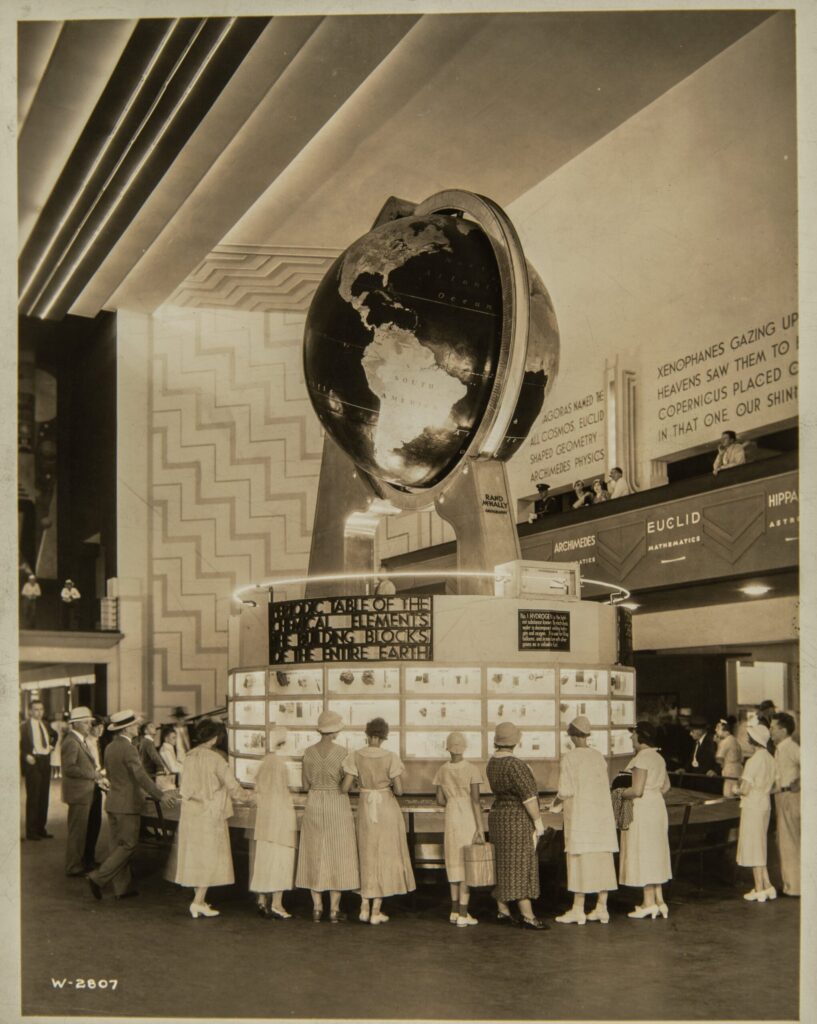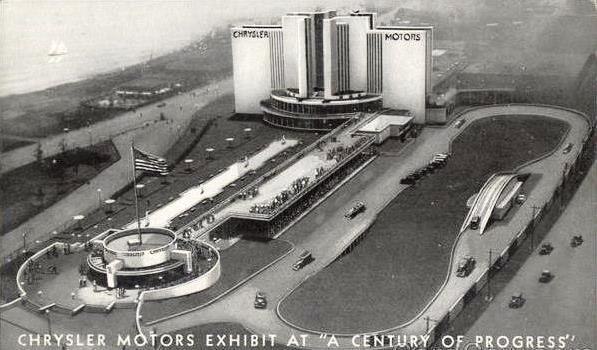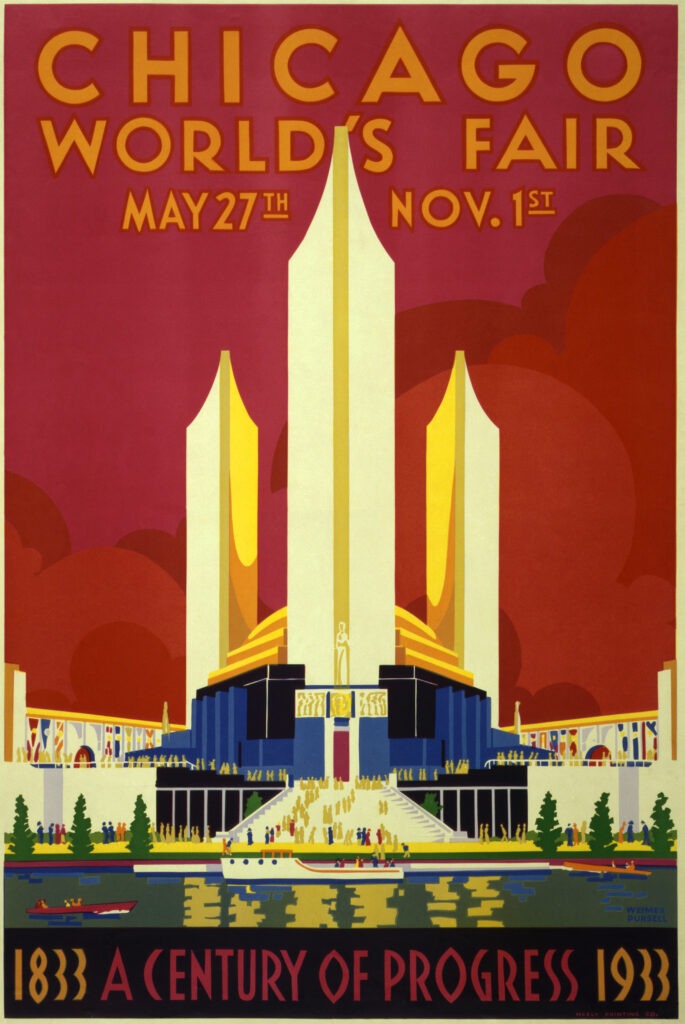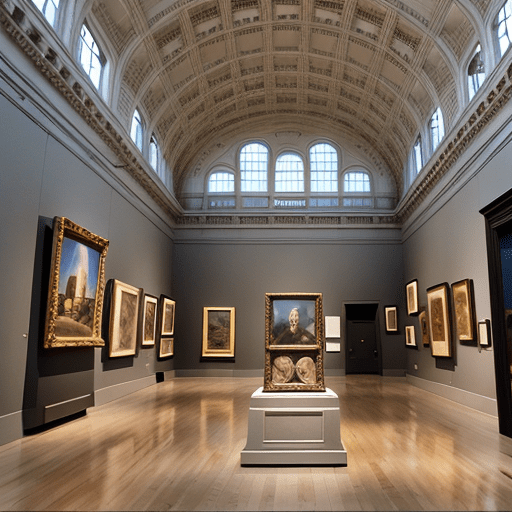Chicago World’s Fair in 1933
The Chicago World’s Fair of 1933, also known as the Century of Progress International Exposition, was a defining moment in the history of global exhibitions. 1933 Chicago World’s Fair marked the centennial anniversary of the city and was held to celebrate the advancements in technology, architecture, and society over the past century. The fair opened on May 27, 1933, and ran until October 31, 1933, with a second run from May 26 to October 31, 1934.
The exposition was a spectacular display of innovation and culture, drawing exhibitors and visitors from across the globe. It was more than an exhibition; it was a symbol of hope during the Great Depression, showcasing human achievement and the promise of a better future. The city of Chicago transformed into a playground of the avant-garde, with its lakefront adorned with futuristic buildings and its skyline telling the story of progress.
Hosting over 48 million visitors, the fair left an indelible mark on the city of Chicago and the world. It demonstrated the resilience of the human spirit in the face of economic adversity and became a beacon of light, guiding society toward the possibilities of a new era.
The Significance of the 1933 Chicago World’s Fair
The 1933 Chicago World’s Fair was not just another exposition; it was a pivotal event in the annals of world fairs. Its significance lay not only in its grandeur but also in its timing. Occurring in the midst of the Great Depression, it provided much-needed employment and uplifted the spirits of a nation struggling with economic hardship.
The fair’s theme, “A Century of Progress,” was chosen to reflect the evolution of science and technology since the founding of Chicago. It was an opportunity for nations and corporations to showcase their latest innovations, from advancements in transportation and architecture to breakthroughs in communication and home appliances. The fair also played a crucial role in shaping public opinion about modernity and the future.
Moreover, the Chicago World’s Fair of 1933 set a precedent for international cooperation and cultural exchange. It brought together people from diverse backgrounds and fostered a sense of global community, an achievement that resonates to this day. It celebrated cultural diversity and encouraged the sharing of ideas, making it a milestone in the history of global exhibitions.

Unique Features of the 1933 Chicago World’s Fair
The Chicago World’s Fair of 1933 was replete with features that distinguished it from previous exhibitions. One of the most remarkable aspects was its use of modern architecture and design, which reflected the Art Deco movement. This gave the fairgrounds a sleek and futuristic look that captivated visitors and left a lasting visual legacy.
Another unique feature was the fair’s use of lighting, which was particularly innovative for its time. The fairgrounds were illuminated with novel lighting techniques that showcased buildings and exhibits in a way that had never been done before. This not only extended the hours of the fair into the night but also added a magical and otherworldly quality to the experience.
The fair also boasted an array of attractions that were groundbreaking in their execution. From the Sky Ride, an engineering marvel that carried visitors across the fairgrounds, to the Hall of Science, which offered interactive exhibits on scientific advancements, the Chicago World’s Fair of 1933 provided an immersive and educational experience for all who attended.
The 1933 Chicago World’s Fair: A Century of Progress
Reflecting on “A Century of Progress,” the fair’s chosen theme highlighted the leaps and bounds by which humanity had advanced over one hundred years. It was a testament to the relentless pursuit of knowledge and the cumulative achievements in various fields of human endeavor.
The exposition was designed to be a showcase of human evolution in every sense. From technological marvels like the first all-electric house, which predicted the widespread use of home appliances, to cultural showcases that offered glimpses into the traditions and advancements of nations around the world, the fair was a microcosm of human progress.
Educational exhibits were a cornerstone of the fair, with a focus on scientific discovery and industrial innovation. These exhibits not only educated the public about recent advancements but also inspired future generations to continue the pursuit of progress. The fair’s legacy as a celebration of a century’s worth of advancements lives on in the spirit of innovation it championed.
Architectural Marvels: Chicago World’s Fair 1933 Buildings Still Standing
The Chicago World’s Fair of 1933 was a showcase of architectural innovation, with structures designed by some of the most prominent architects of the time. While many of the fair’s buildings were intended to be temporary and were dismantled after the event, a few have stood the test of time and remain as reminders of the fair’s grandeur.
One of the most iconic structures that still stands is the Adler Planetarium, which was America’s first planetarium and was considered one of the most modern and innovative buildings of its time. The planetarium continues to inspire wonder and educate the public about the stars and the universe.
Another surviving structure is the Museum of Science and Industry, originally known as the Palace of Fine Arts. It was built to be a permanent fixture and is one of the only remaining buildings from the fair. It stands as a monument to the fair’s celebration of human achievement and continues to be a popular destination for those interested in science and technology.
The fair’s legacy in architecture is not limited to these buildings. The event also influenced architectural design and urban planning in Chicago and beyond, with its emphasis on modernity and progress finding echoes in subsequent developments around the world.
Memorable Exhibits at the 1933 Chicago World’s Fair
Among the myriad of exhibits at the Chicago World’s Fair of 1933, several left an indelible impression on the visitors. The “Homes of Tomorrow” exhibit showcased futuristic home designs and innovations that predicted how Americans would live in the future. These homes featured unique materials, modernist design, and then-cutting-edge appliances that captured the public’s imagination.
Another exhibit that drew crowds was General Motors’ “Futurama,” which offered a glimpse into the world of tomorrow. It depicted an idealized city with advanced transportation systems and urban design, prophesying the role of the automobile and the development of the interstate highway system in shaping American life.
The fair also featured international pavilions where countries from around the world displayed their cultures, industries, and technological prowess. These pavilions were a testament to the fair’s global reach and its role in fostering international dialogue and collaboration.
Fascinating Facts about the Chicago World’s Fair 1933

The Chicago World’s Fair of 1933 was filled with moments and milestones that have become part of the lore of world fairs. One of the most fascinating facts is that the fair introduced many visitors to foods that would become American staples, such as the all-American hot dog and fan-favorite, the Twinkie.
Another interesting tidbit is that the fair was instrumental in the revival of the long-neglected Chicago lakefront, leading to the development of what is now one of the city’s most popular and scenic areas. The fair also made history by including a replica of Fort Dearborn, which was the first time a host city included a historical reconstruction of this scale.
The fair’s impact on popular culture was significant as well. The fair inspired the board game “Monopoly,” which features elements of land ownership and construction that were central themes of the exposition. Additionally, it was the first fair to have an official mascot, a character named “Century Sam.”
The 1933 Chicago World’s Fair Key: A Collector’s Item
One of the most sought-after souvenirs from the Chicago World’s Fair of 1933 is the commemorative key. This key was not merely a trinket; it represented the unlocking of new eras of progress and potential. Collectors and history enthusiasts seek out these keys as tangible connections to the past and as symbols of the fair’s legacy.
The keys were crafted in various designs, some featuring intricate art deco motifs, while others bore the fair’s logo or imagery of its iconic structures. They were made from different materials, including metal and Bakelite, an early form of plastic that was itself an innovation at the time.
Today, these keys are more than collectibles; they are artifacts that represent the spirit of the Chicago World’s Fair of 1933. They remind us of the hope and ambition that characterized the exposition and continue to inspire those who hold them in their collections.
The Legacy of the World’s Fair Chicago 1933
The legacy of the Chicago World’s Fair of 1933 is multifaceted, influencing areas as diverse as architecture, culture, and even urban development. The fair’s emphasis on technological innovation and modern design principles had a lasting impact on the American aesthetic and helped shape the country’s vision of the future.
The fair also left a cultural legacy, promoting a sense of international camaraderie and understanding. Its global exhibits and cultural exchanges laid the groundwork for the multiculturalism and global interconnectedness that we experience today.
Perhaps most importantly, the fair’s legacy is one of inspiration. It demonstrated the transformative power of human ingenuity and the potential for progress in the face of adversity. The fair’s spirit continues to motivate new generations to dream big and strive for a world that is ever more advanced, connected, and enlightened.


